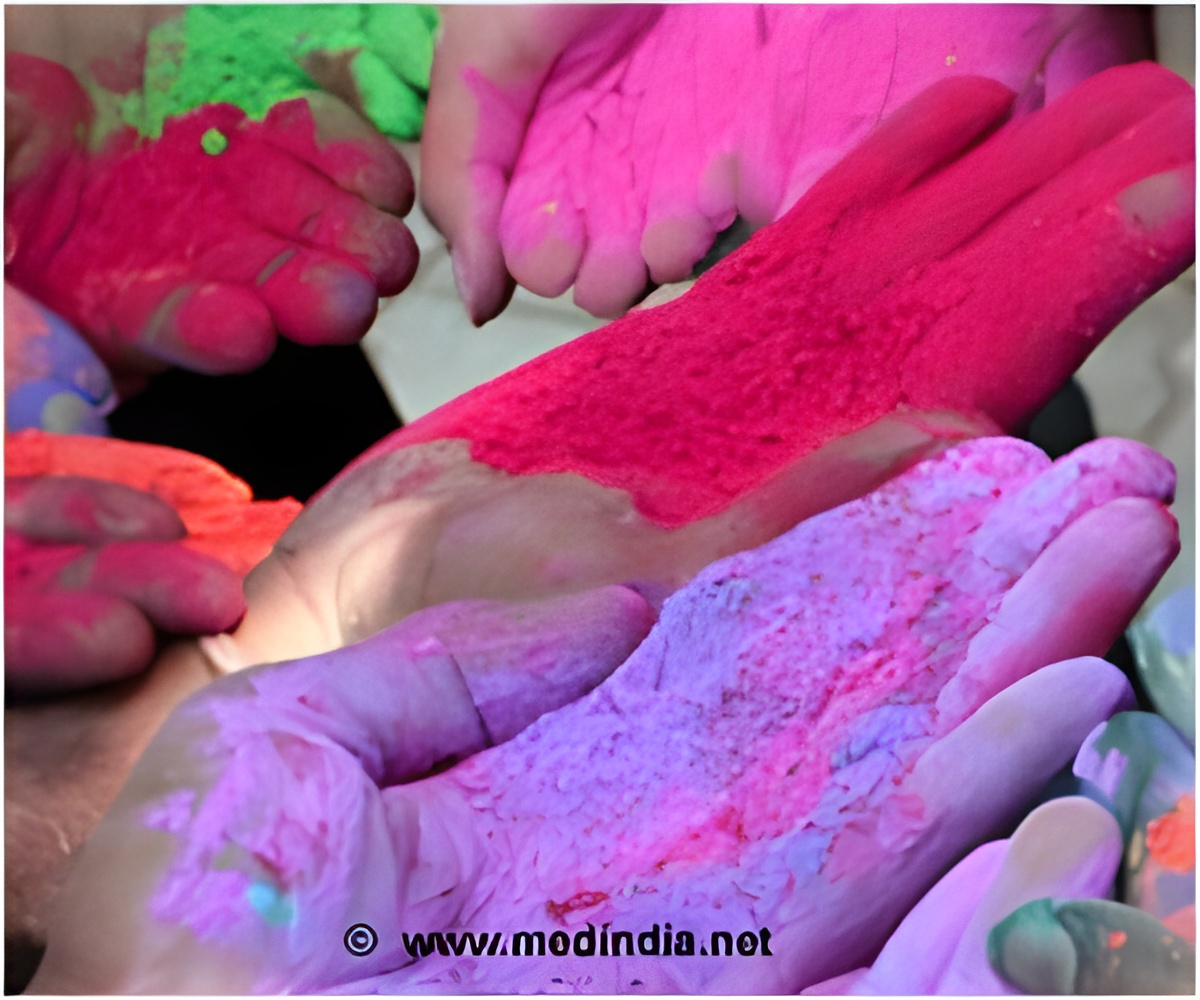Holi colors infused with chemicals have the potential to induce a range of health concerns, such as skin irritation, allergies, eye issues, and respiratory problems.

Holi 2024:a Joyful and Colorful Festival
Go to source), a vibrant festival celebrated with fervor in India and around the world, heralds the arrival of spring and fosters unity among people of all ages. However, amidst the joyous festivities, it's crucial to consider the potential harmful effects of colors on children's respiratory health. Chemical-laden Holi colors can trigger various health issues, including skin irritation, allergies, eye problems, and respiratory complications, particularly in kids. These colors often contain hazardous chemicals like lead, mercury, chromium, cadmium, and asbestos, exacerbating conditions such as asthma, bronchitis, and COPD.
‘We should raise awareness about potential hazards associated with Holi colors and take preventive measures beforehand. Let's celebrate responsibly, prioritizing the well-being of our children during the Holi festival! #Holi’





Inhaling them causes bronchitis and asthma for chromium which is common in Holi colors while mercury affects both respiratory systems and internal organs posing risks to kidneys, liver and even unborn babies during pregnancy. pregnant women are particularly vulnerable to the toxic effects of these colors, which can lead to respiratory problems and pose serious health risks to both the mother and the developing fetus” says Dr. Ramesh B R, Senior Consultant Pulmonologist, SPARSH Hospital Bangalore.
5 Essential Precautionary Tips for Ensuring Children's Safety
Opt for Natural and Organic Colors: It is important to promote the use of natural and organic colors like Turmeric, Beetroot, and flower extracts while discouraging synthetic or chemical-based colors. These natural options are free from harmful chemicals, ensuring minimal respiratory impact, unlike their synthetic counterparts, which may contain toxic substances like Chromium and Mercury. Raise awareness about the health hazards of synthetic colors, advocating for safer alternatives.Protective Gear: Give priority to the use of protective gear such as masks or scarfs to cover the nose and mouth especially for those children who have respiratory conditions. Such a move will reduce exposure to particles suspended in air as well as minimize risk of irritation on respiratory system.
Limited Exposure and Maintaining Hygiene: Parents should allow short-duration outdoor activities during Holi, particularly for children with respiratory conditions, to minimize color exposure. Ensure adequate ventilation in enclosed spaces where color play occurs. Additionally, emphasize good hygiene practices like frequent handwashing with mild soap and water to remove colors and prevent accidental ingestion. Encourage children to avoid touching their faces, especially around the eyes and mouth, while playing with colors.
Stay Hydrated: Water is essential for keeping children hydrated during the festivities. It enables the body to get rid of toxins and relieve any respiratory troubles that might arise as a result of inhaling-colored powders.
Seek Medical Attention: In case your child has difficulty breathing, wheezes or coughs, seek immediate medical attention for him/her. Early intervention prevents worsening of respiratory problems and ensures proper treatment.
Advertisement
Reference:
- Holi 2024:a Joyful and Colorful Festival - (https://www.holifestival.org/)
Source-IANS









